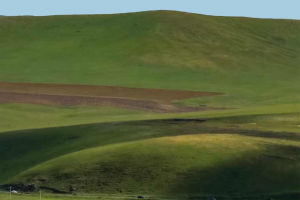Forest tourism is a type of tourism that involves wildlife activities occurring in forest areas, with tourism as the primary purpose. These activities can be referred to as forest tourism or forest ecotourism, regardless of whether they directly use the forest or not.
Forest parks are an essential part of an independent ecological and economic system in social civilization. It is crucial to rationalize the construction of forest parks and to develop forest tourism scientifically.
Combining the ecological culture construction of forest parks with the construction of the national forestry ecological culture system is crucial to promoting forest parks' greater social and ecological benefits.
The design and construction of forest parks must follow the principle of high-standard design before construction and reflect the concept of the harmonious development of man and nature. We must also protect the natural forest and ecological landscape as the core and appropriately add artificial landscape to ensure the integrity of the natural and human landscape in the forest park.
Vancouver is a city that relies on forests, and it has numerous forest parks with a wide variety of trees, such as pine trees, oak trees, maple trees, walnut trees, cherry trees, chestnut trees, hazelnut trees, and fir trees, forming large mixed forests.
Every autumn, these trees produce a lot of seeds and fruits, which provide sufficient food for forest animals. Autumn is also the season when animals rush to stock up on food for the winter.
Black squirrels love to eat the seeds of pine trees, and they run to their nests with pine towers in their mouths. Brown squirrels find freshly ripened walnuts from the trees and weave their way through the branches.
Gray squirrels are more fond of chestnuts and use their paws to pick through the shells of the thorny chestnuts. Yellow-bellied squirrels prefer hazelnuts, stuffing their mouths and running to their nests.
Serengeti National Park in Tanzania is located west of the East African Rift Valley, 130 km west-northwest of Arusha. It covers a total area of 25,063 km2, and a narrow section of the park extends eight kilometers westward into Lake Victoria and extends northward to the Kenyan border.
The Serengeti plain is mainly crystalline rock covered with volcanic ash, accompanied by a large number of granite hills exposed on the ground.
Zhangjiajie National Forest Park is located in the city of Zhangjiajie in northwestern Hunan Province, China. It was the first national forest park commissioned by the State Council in 1982 and approved by the National Planning Commission for the Zhangjiajie National Forest Park Tourist Attractions Map.
It was included in the World Natural Heritage List by the United Nations in December 1992 for its peculiar quartz sandstone large peak forest and included in the World Geopark in February 2004.
Unique scenery is an essential guarantee to attract customers and increase the rate of return visits. Forest parks should combine the local natural environment and the treasures left by humanities and history to build forest parks and improve the overall park experience.
Kakadu National Park in Australia is located 200 kilometers east of Darwin, the capital of the Northern Territory of Australia, and about 100 kilometers east of Darwin Harbour. It covers an area of 19804 square kilometers.
The park preserves a complete natural ecological primitive environment, with beautiful scenery of lush primitive forests and a wide variety of rare wildlife, many of which are unique to Australia.
Forest tourism offers a variety of forms of wildlife activities that occur in forest areas, with tourism as the main purpose.
The development of forest tourism requires rationalizing the construction of forest parks, following the principle of high-standard design before construction, and reflecting the concept of the harmonious development of man and nature.


